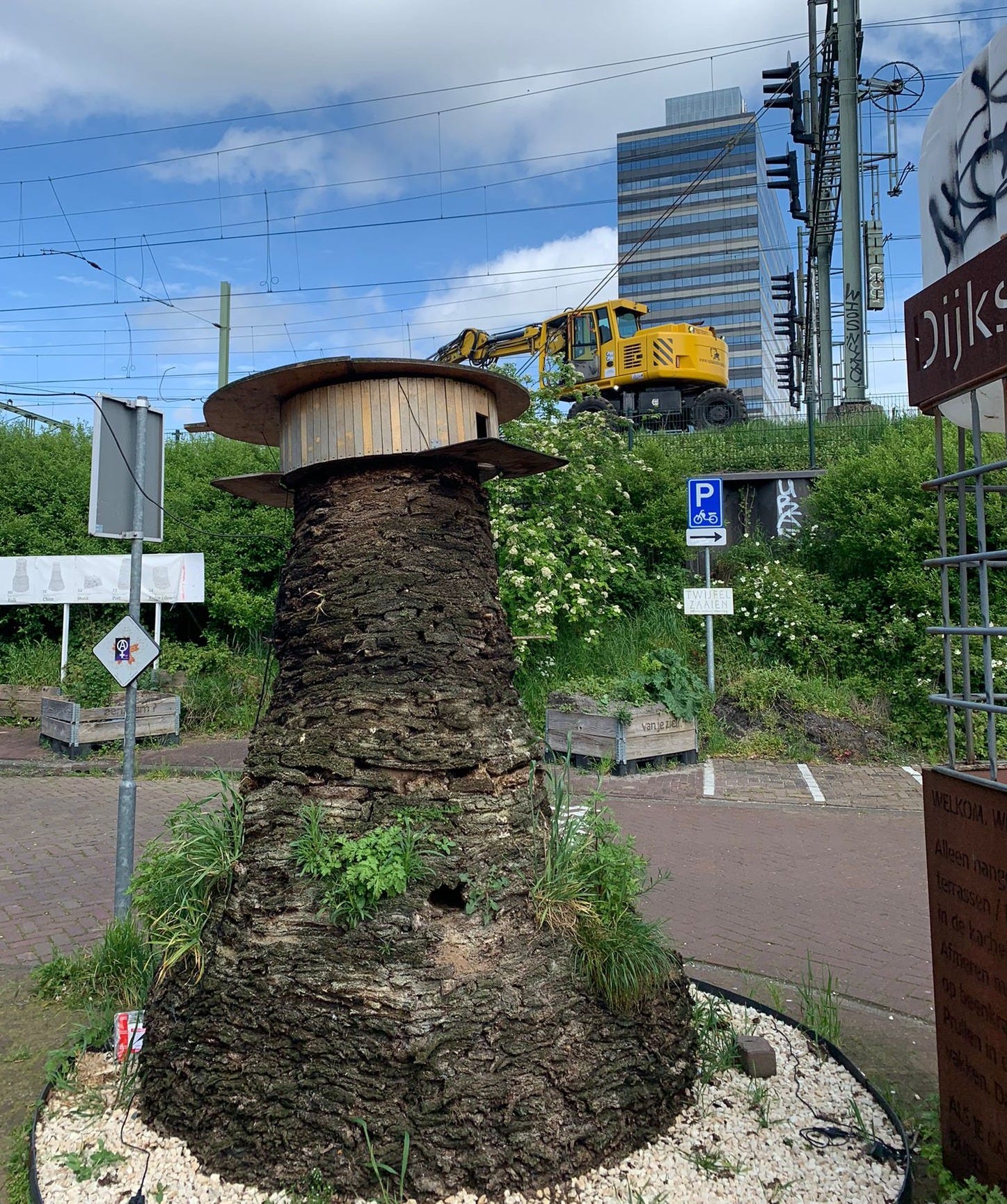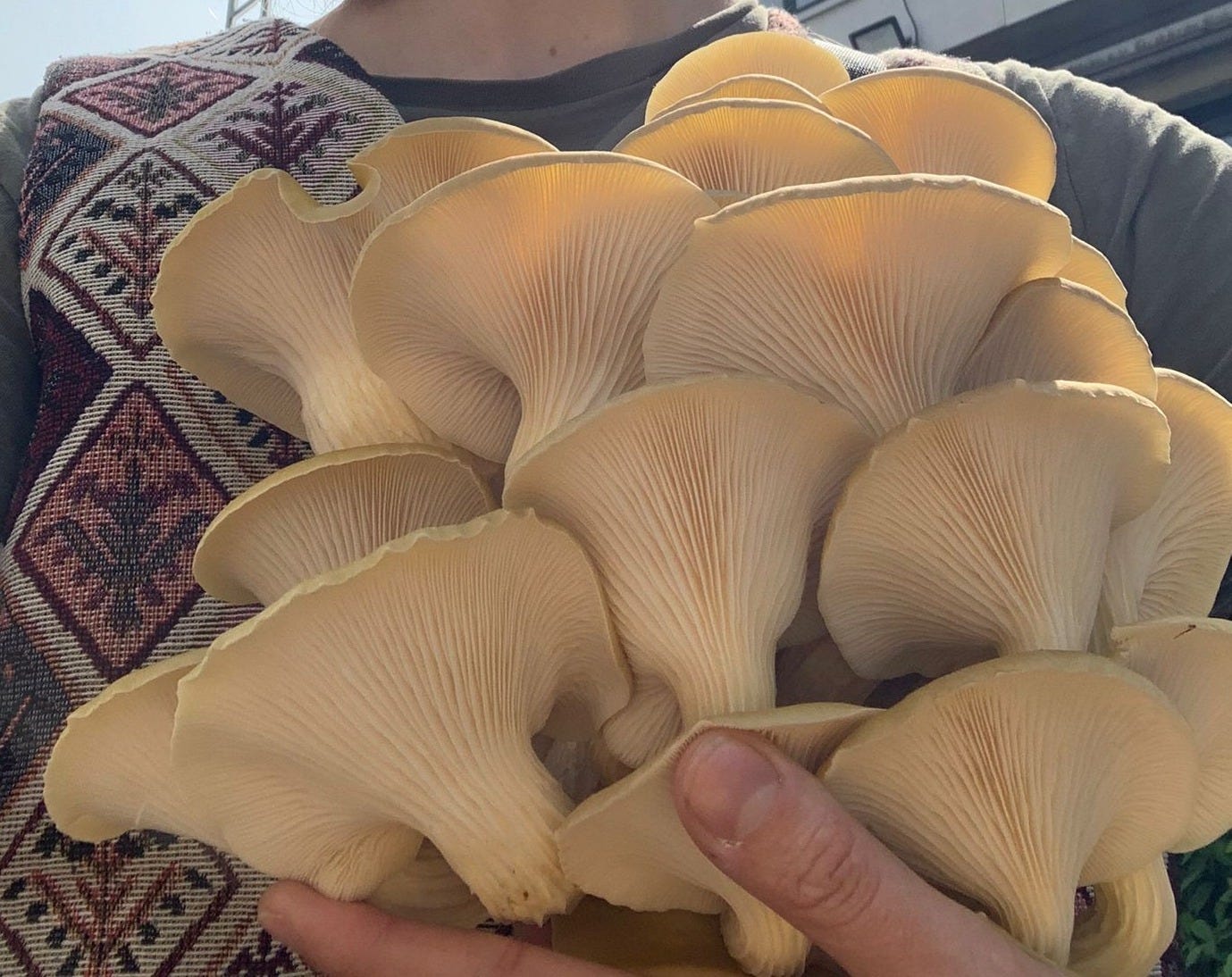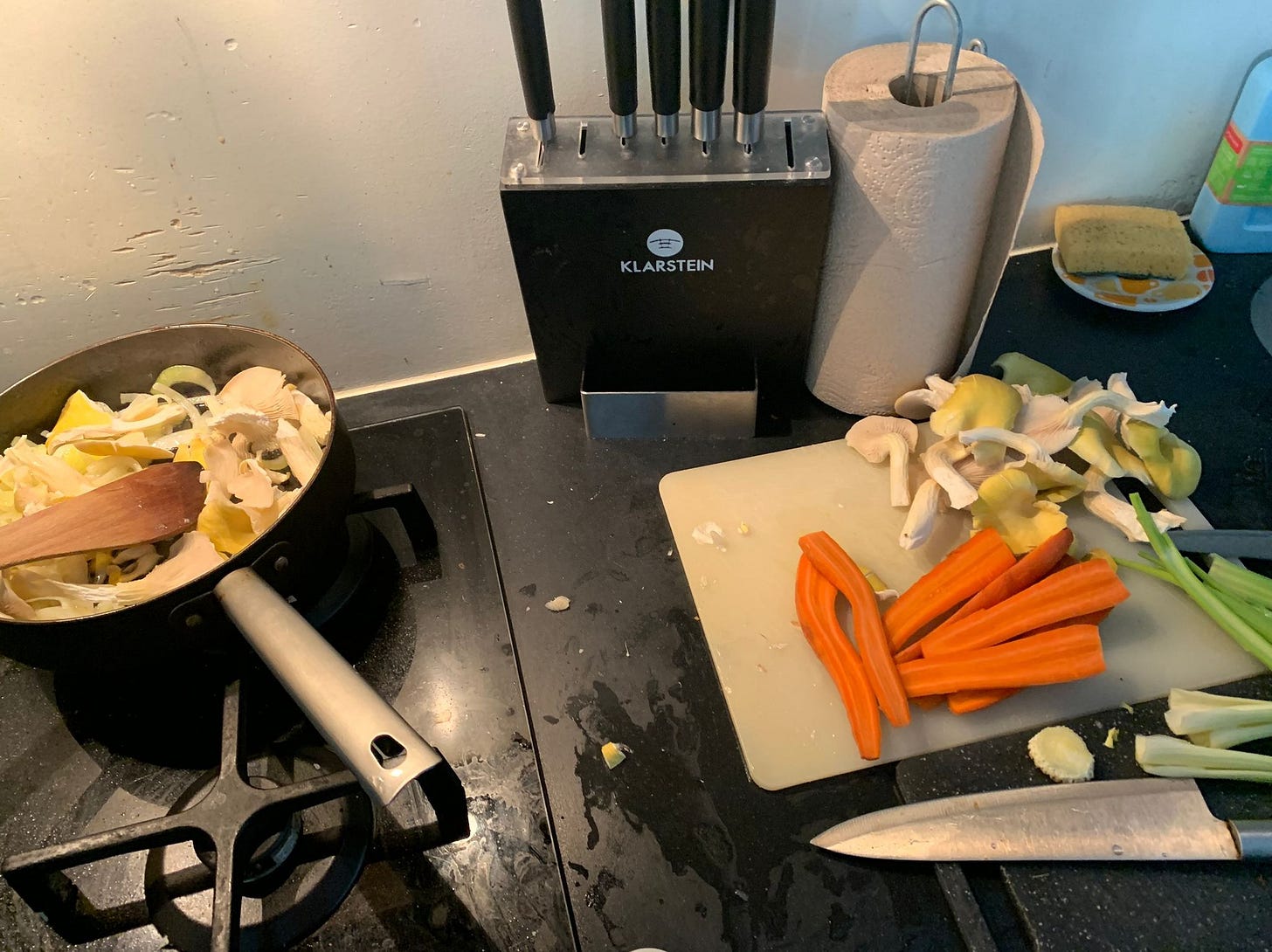Oceans rise, empires fall, still we typically build houses, streets, and towers under the assumption (or ambition, expectation, hope) that they will persist through the ages unchanging, indefinitely. Cities in particular are a dense landscape made up, for the most part, of such stuck structures. “The whole idea of architecture is permanence”, writes anthropologist Tim Ingold, and yet: “Buildings are part of the world, and the world will not stop still but ceaselessly unfolds along its innumerable paths of growth, decay and regeneration”.1
There’s a speculative question here, I think: What if our cities’ structures were not designed to resist these innumerable paths, but travelled contentedly along them?
It might sound abstract, but there are local, tangible answers, one of which I happen to know well: Arne Hendriks’ mycelium Pigeon Towers, scattered around the art center Mediamatic. I interviewed Arne for my MA thesis back in May — all following block quotes are from this interview — and returned to help work the towers on a few Fridays in November and December.
The pigeon towers are constructed out of waste mycelium blocks from industrial oyster mushroom farms, cut with a saw and stacked precisely. Mycelium being a living material, the layers grow together and become inseparable over time. The practice works thus: Build a tower and observe who moves in, what happens when the nonhuman is given ambiguous, organic structures to inhabit amidst the familiar, solid, and precise angles of buildings and roads. Then build another, and continue to pay attention, and another, and so on and so on, Friday after Friday after Friday. Arne began this weekly building practice four and a half years ago, and passersby may now encounter towers in all stages of their life cycle. Some of them lean precariously, one collapsed onto the neighbouring street earlier this year. He witnesses these changes with satisfaction:
There are very beautiful stories we can tell about this process of decay because it is part of life. We’re very good at supporting the ideas of growing and we have trouble with the other story, the story of decaying things. That’s what I try to do with these towers: showing the process of decay to be as beautiful, and in many ways even more interesting than the process of growth. These things start as thriving monocultures of oyster mushrooms, but if you look at the complexity of the decaying process, all the species that partake in it, the different colours and smells and textures, why wouldn’t we find those also very beautiful?
Pigeon towers, mushroom farms, myco-assemblages, skyscrapers for worms — the towers are many things for many kinds of beings, and as such not entirely easy to explain to curious observers (of which there are many each Friday) in a single sentence.
They didn’t exist, now they do, but we still don’t know exactly what it means. It’s not my priority to understand completely, because I want these things to just be embedded in culture and become meaningful through their own facility to communicate with the environment. So the towers have their own voice, they have their own presence, their own smell, right? And they are here, now. I want them just to be present. To exist, to be.
The towers become a part of the culture of the street and the city simply by existing as structures in place. Sometimes they turn heads, often they go unnoticed. But what is it, precisely, that they communicate? Arne sees the city as an extreme manifestation of human desire, individual as well as collective, manufactured politically or marketed economically. It is desire + design, ultimately, which set a city into stone. Considering that most people today live in cities, Arne told me in May, they need to become learning platforms for liveable spaces shared by humans and nonhumans: “The city is where we need to learn most things.”
The pigeon towers are an ongoing experiment to this end, and it’s a slow and strange learning to be sure. The generous timescale this research has been afforded runs anachronistic to the usual staccato rhythms of project-based funding and the pressure on artists to constantly produce new work and ideas. After this year’s earthquake of funding cuts in the Dutch cultural sector, Arne, too, has had to contend with the question: “Where is this project going?” The art world, in times of scarcity, speaks in the voice of impatient in-laws. Where are the grandchildren? Are you going to build a house, how soon? We want to see some deliverables.
The towers modestly but steadfastly contravene. They are a kind of low-key anticapitalist utopia right here before our very eyes, I’d tell you after my third beer if I drank lots of beer and could speak with authoritative confidence, it’s about growing and decaying together, yes, but strangely, slowly, meanderingly, and what is more, I think, I hope, that they are pancake sci-fi, as the author Andri Snær Magnasson defines it: Science fiction, yes, but the kind where your future grandchild bakes pancakes for her own ten year old grandchild and they sit and eat and talk at some semblance of a kitchen table in the year 2150.2 In this scenario, of course, they fry up some oyster mushrooms from the nearest mycelium tower in the abundant semi-salvage economy of future Amsterdam. Something like that. But I digress.
The thing is, I’d somehow assumed (expected, hoped), that while the structures themselves would continue to decay and crumble slowly and alive-ly into fertile soil, the practice would continue Friday after Friday, into the future (that of rising oceans; falling empires) indefinitely. But none of this is to be taken for granted — for granite, Ursula Le Guin’s words echo in my head, and anyway: do not take me for granite: I wish to be mud, to give way, to leave footprints where I walk.3
“It wouldn’t be much different if I did it for seventy-five years”, Arne admits. The differences are too many but you need a magnifying glass to see them and they’re not linear enough to neatly add up. “But what a gift to have been able to do this for so many years”, he adds. “I’ll never forget it.”
And neither will I. For these past Fridays, I helped weeding and tidying around the street-facing towers. Despite the cold drizzle and encroaching darkness of December, this has been the most nourishing part of my week: “Look at how they always express themselves in public”, Arne gestured at a sunken tower in response to my doubts about whether and when and how and why or why not to start writing online. “And it can be beautiful, or less so, and people understand it, or not, but they’re here, you know?” Ongoing.
Now, how to write (and live, and be a guest and be a host) like that:
Making: Anthropology, Archaeology, Art and Architecture, Tim Ingold, p. 48.
Being taken for granite, Ursula Le Guin. <3







